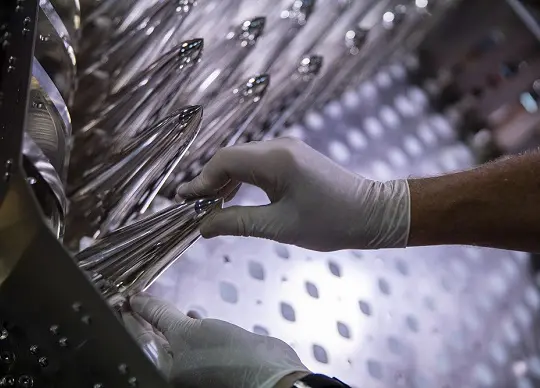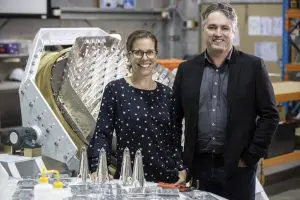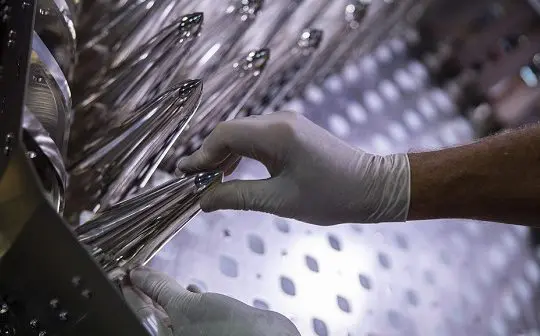
New Australian space startup Quasar Satellite Technologies is set to revolutionise space communication, allowing ground stations to talk to hundreds of satellites at once using technology developed by CSIRO, Australia’s national science agency.
Over the next decade, more than 57,000 satellites will be launched worldwide to support a surge in demand for space-derived data, from environmental monitoring such as bushfires and floods, to connecting to sensors on ‘Internet of Things’ networks.
However, with present-day ground stations typically tracking one satellite at a time, heavy congestion will limit the potential of satellites and the downstream industries they support.
Launched today, Quasar is backed by $12 million in funding, technology and industry expertise from CSIRO, Main Sequence, the Office of the NSW Chief Scientist & Engineer, and Australian companies Vocus, Saber Astronautics, Fleet Space Technologies and Clearbox Systems.
Quasar will look to capitalise on the US$130 billion satellite ground communications market, using technology developed by CSIRO for radio telescopes like its own ASKAP telescope in Western Australia.
CSIRO Chief Executive Dr Larry Marshall said after helping receive images of humans on the Moon fifty years ago, commercialisation of this breakthrough research will now help to put more Australians into new jobs in our growing space industry.
“CSIRO has been a leader in radio astronomy and spacecraft communications for more than 60 years, from supporting the Moon landing in 1969 to inventing and delivering the phased-array feeds in Australia’s newest radio telescope, ASKAP in Western Australia,” Dr Marshall said.
“CSIRO’s technology breakthrough enabled the world to connect without wires using fast WiFi, and now our technology will help connect satellites using our breakthrough phased array technology.”

“CSIRO commercialisation specialist and a founding Director of Quasar, Dr Ilana Feain, and Quasar CEO, Phil Ridley, with the CSIRO’s phased array technology”
Quasar CEO Phil Ridley, a telecommunications veteran behind some of Australia’s pioneering internet services like BigPond and Vividwireless, said the technology would enable new satellite-based business models and opportunities previously hindered by legacy ground station technology.
“Space is the highway of the stars, but current ground station technology is the equivalent of one-lane on-ramps,” Mr Ridley said.
“By making it possible to communicate with hundreds of satellites simultaneously, we’ll be able to ensure the thousands of satellites launching over the next decade have a way to call home efficiently.”
CSIRO commercialisation specialist and a founding Director of Quasar, Dr Ilana Feain said bringing together state of the art technology, private investment and industry expertise gives Quasar a strong head start.
“CSIRO’s phased array technology revolutionised radio astronomy by enabling ASKAP to see enormous portions of the sky at once – about 30 times the area that conventional telescopes could see,” she said.
“I’m excited to see the next evolution of this technology empower satellite businesses and their downstream industries.”
Quasar will offer the technology ‘as a service’, enabling commercial and public sector partners to access data from satellites in low, medium and geostationary orbit from anywhere in the world, in the same way many cloud computing services work today.
Quasar is building the technology using an Australian-based team with expertise and research support from CSIRO.





